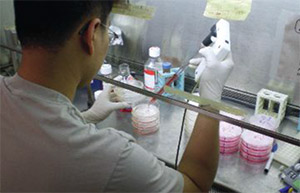Upgrading and Upstaging at Biopsy

There is an increased interest in active surveillance due to concern that men diagnosed with low-risk prostate cancer may be over-treated. However, active surveillance criteria could be improved by identifying factors that place men with low-risk disease at increased risk of harboring occult Gleason 7-10 and T3-T4 disease. In 2007, Dr. Catalona’s research group examined 455 patients diagnosed with low-grade prostate cancer based on their biopsies.1 More than one-third of these patients were upgraded or upstaged upon examination of their surgical specimen after radical prostatectomy.
A new study from the Harvard Medical School examined the incidence of pathologic upgrading and upstaging in 10,273 men diagnosed with low-risk prostate cancer.2 Researchers hoped to identify predictors of advanced disease that can be used to better select patients for active surveillance.
Subjects were from the Surveillance, Epidemiology and End Results (SEER) database. Low-risk prostate cancer was defined as T1c or T2a, Gleason 3+3 and PSA
Nearly half of the patients (44%) were upgraded and 9.7% were upstaged at prostatectomy. Multivariable analysis of 5,581 patients showed age, PSA, and percent positive cores, but not race, were associated with occult, advanced disease. Age >60, PSA >5, and >25% positive cores were associated with upgrading. These patients were also associated with upstaging. Sixty percent of patients with PSA 7.5-9.9 and >25% positive cores were upgraded.
The authors concluded that the high incidence of upgrading and upstaging indicated patients diagnosed with low-risk cancer should be risk-stratified by PSA and percent positive cores to help make decisions regarding active surveillance.
- Griffin CR, et al. Pathological features after radical prostatectomy in potential candidates for active monitoring.
J Urol. 2007; 178(3 Pt 1):860-3; discussion 863. - Dinh K et al. Incidence and Predictors of Upgrading and Upstaging Among 10,000 Contemporary Patients with Lowrisk Prostate Cancer. Urology. 2015; doi: 10.1016/j.juro.2015.02.015.











